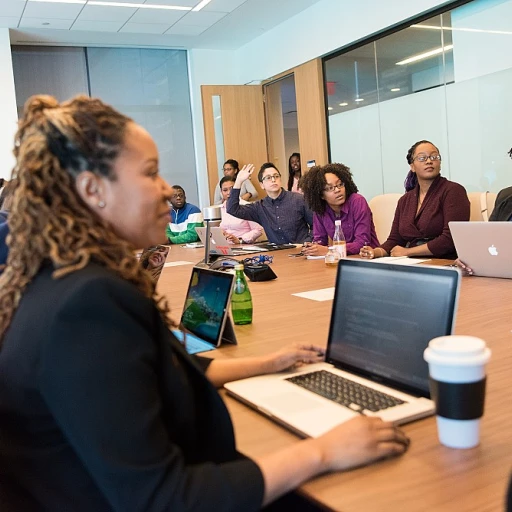
Understanding the Candidate Persona
Recognizing Your Ideal Candidate
Before reaching out to potential candidates, it's essential to have a deep understanding of the candidate persona you're targeting. A well-defined candidate persona not only helps in identifying the skills and qualifications you are seeking but also aids in tailoring your outreach efforts to attract the right talent. By getting to know the intricacies of your ideal candidate, you set the groundwork for a successful outreach strategy. Begin by analyzing the roles you need to fill and the qualities that align with your company culture. Assess past successful hires to determine common characteristics that contributed to their success within your organization. Engage with your current top-performing employees to gain insights into their backgrounds and motivations, allowing you to construct a more comprehensive candidate profile. Understanding where your ideal candidates spend their time online is equally as crucial. Are they active on professional networks like LinkedIn, or do they prefer industry-specific forums and communities? This knowledge will help you decide the best platforms and methods for reaching them, which we'll explore further in the section dedicated to leveraging social media platforms. Additionally, it's worth considering the passive candidate pool – individuals who are not actively seeking new opportunities but may be open to hearing about them. Tapping into this hidden talent requires a strategic approach, much like the one discussed in the guide to passive candidate sourcing on finding hidden talent. By understanding how to navigate this passive audience, you'll enhance your chances of attracting top-tier candidates. Crafting the perfect outreach message is the next step in the process, which we'll delve into in the following section. This involves creating personalized and compelling messages that resonate with your target candidates and prompt them to engage with your opportunity.Crafting the Perfect Outreach Message
Giving the Personal Touch
Before we dive into the specifics of messaging, it's crucial to understand that personalization is key. A candidate is more likely to respond positively to an outreach message that feels uniquely tailored to them rather than generic. Achieving this begins with gathering insights about the candidate's professional background, interests, and career aspirations. When personalizing your message, mention specific projects or roles that the candidate has been involved in, or express genuine admiration for their professional journey. This approach not only shows your interest in their profile but also builds a level of trust and rapport.The Power of Storytelling
Great outreach messages often incorporate storytelling elements to engage candidates effectively. Telling a compelling story not only captures a candidate’s attention but also helps illustrate the value proposition of your organization. Share success stories about current employees, or highlight a unique project that showcases your company culture and values. Importantly, your story should align with the candidate's interests and aspirations. Crafting your message with relatable narratives can motivate candidates to envision themselves within your organization’s success.Keeping it Concise
While personalization and storytelling are essential, it's also important to keep your message concise. Candidates receive numerous messages each day, so making sure your communication is to the point is vital. A concise message respects the recipient’s time while delivering the core message effectively. Include only essential information—introduce yourself, briefly explain why you’re reaching out, and clearly present the next steps. Leaving room for the candidate to initiate further discussion can make your outreach more engaging and less daunting.Engagement and Follow-Up
Once you’ve sent your crafted message, engagement doesn't end there. It’s crucial to be proactive in following up with the candidate. Polite reminders and additional information can rekindle their interest if they don’t respond initially. However, be mindful not to overwhelm them with excessive follow-ups. React positively and promptly to any responses. Showing appreciation and providing detailed answers to their questions ensures a smoother communication flow and helps in maintaining candidate interest. For further insights on balancing personalization with efficiency in reaching out, check our guide on candidate sourcing and engagement.Leveraging Social Media Platforms
Utilizing Digital Platforms for Candidate Engagement
In today's digital age, social media platforms have become indispensable tools in reaching potential candidates. These platforms not only allow you to connect with a broader audience but also provide insights into the interests and behaviors of potential hires. By leveraging these platforms effectively, you can enhance your candidate outreach strategies significantly.
Firstly, it's crucial to identify which platforms your target candidates frequent. Are they more active on LinkedIn, Twitter, or perhaps Instagram? Understanding where your candidate persona spends their time online can help you tailor your approach, ensuring your messages reach the right audience. You can delve deeper into understanding the candidate persona to refine this strategy further.
Once you've identified the appropriate platforms, focus on creating engaging and authentic content. Share insights about your company culture, employee testimonials, and industry news to build a connection with potential candidates. This approach not only attracts attention but also reinforces your employer brand, which we discussed earlier as a vital component of successful candidate outreach.
Moreover, consider using social media analytics tools to track the effectiveness of your outreach efforts. These tools can provide valuable data on engagement rates, helping you refine your strategies and improve your outreach process over time.
For a more comprehensive approach to building a strong talent pipeline, you might find this guide to crafting a strong talent pipeline useful. It offers insights into creating a sustainable strategy that ensures a steady flow of qualified candidates.





